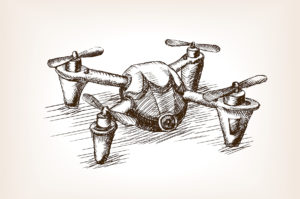Unmanned Aerial Vehicles (UAVs), unmanned systems or drones as we more commonly know them have been around for years, and in the last decade the Australian landscape has seen some significant changes to both regulation and registration practices and how they impact operators. Although we see drones integrated into industry practices today, it is also important to look back and remember the history of drones in Australia.
In 1988 the Civil Aviation Act was put into place to “establish a regulatory framework for maintaining, enhancing and promoting the safety of civil aviation, with particular emphasis on preventing aviation accidents and incidents”.
In July of 1995 the Civil Aviation Safety Authority or CASA was established as an independent statutory authority to contribute to a structure for safe aviation operations in Australia.
A few years later the Civil Aviation Safety Regulations (CASR) 1998 was created (which was based on the Civil Aviation Act). In 2001 Part 101 was added, which set out rules governing remotely piloted and model aircrafts. This is when Australia was seen to have officially entered ‘The Drone Age’ as it became the first country to introduce legislation around unmanned aerial vehicles. Since then the CASA has worked to modernise these regulations to allow for current innovation and practices.
In 2016 specifically CASA almost completely deregulated the recreational use of drones with amendments to Part 101 of CASR by shifting drone regulations to depend on weight rather than operational purposes. Whilst this allowed more Australian businesses to use ‘small’ drones for commercial operations, it meant the use of these small commercial drones increased with operators not completing sufficient training and ultimately created greater risk.
As we know from 2019 onwards CASA planned to reverse this stance, creating stricter registration requirements which stated that registration was required (and needs to be renewed every year) for all commercial drones and all recreational drones over 250 grams. From January 2021, this mandatory registration will come into effect. These changes also mandate drone operators hold a remote pilot license (RePL) or have completed an online training course and pass a safety quiz for accreditation (which must also be renewed every three years).
The drone regulation landscape has changed rapidly in Australia over the last few years to keep operators accountable for their actions and ensure both aviation and public safety are maintained. With rules changing quickly it can be difficult to know what kind of insurance is required to ensure operators are covered in the event of an accident. Precision Autonomy offers a range of insurance plans for these reasons.
To learn more about Precision Autonomy’s Pay-As-You Fly insurance, visit our website or get a quote!
References:



